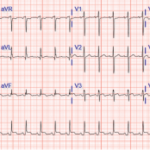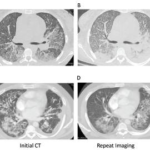On Oct. 8, ChemoCentryx Inc. announced that the U.S. Food & Drug Administration (FDA) has approved avacopan (TAVNEOS), an orally administered selective complement 5a receptor inhibitor, as an adjunctive treatment of adult patients with severe active anti-neutrophil cytoplasmic autoantibody-associated vasculitis (ANCA-associated vasculitis), specifically granulomatosis with polyangiitis (GPA) and microscopic polyangiitis (MPA) (the two main forms…
Search results for: fatigue

Experts Share Insights & Advice on Reproductive Health for Patients with Rheumatic Disease
Contraception, disease control, family planning and managing life with an infant—five experts addressed these concerns and more for patients with rheumatic disease during a special online webinar.

Using Different Fibromyalgia Criteria Affects Prevalence Estimates
A recent paper illustrates how using different fibromyalgia criteria affects reports of its prevalence.1 Writing in Arthritis Care & Research, researchers found the Analgesic, Anesthetic, and Addiction Clinical Trial Translations, Innovations, Opportunities, and Networks–American Pain Society Pain Taxonomy (AAPT) criteria caused far more people to be categorized as having fibromyalgia than criteria put forth by…

Case Report: Sarcoidosis in Patient with History of IgG4-Related Disease
Sarcoidosis and IgG4-related disease (IgG4-RD) are both immune-mediated, often multi-organ, diseases of uncertain etiology capable of presenting with diverse clinical manifestations. Many clinical features are common to both conditions, including hypergammaglobulinemia, the ability to form inflammatory masses and involvement of the lymph nodes, lacrimal glands, salivary glands, meninges and lungs. Although imaging modalities, such as…

Case Report: Drug-Induced Lupus
The incidence of drug-induced lupus continues to rise as clinicians expand their therapeutic armamentarium. An estimated 15,000–30,000 cases of drug-induced lupus occur every year in the U.S. alone.1 It is a well-known, but rare, complication of commonly used medications, such as anti-hypertensive, anti-arrhythmic and anti-epileptic drugs, as well as biologic and immune checkpoint therapies.2,3 The…

COVID-19 Vaccination Induces T Cell Response in Patients Treated with Rituximab
Research indicates mRNA vaccination for SARS‐CoV‐2 infection may induce a T cell response in vulnerable, immunocompromised patient populations being treated with rituximab.

2 Cases of SLE-Associated Diffuse Alveolar Hemorrhage
Pulmonary manifestations in patients with systemic lupus erythematosus (SLE) include pleuritis, acute pneumonitis, interstitial lung disease, pulmonary arterial hypertension, shrinking lung syndrome and diffuse alveolar hemorrhage (DAH). DAH is a rare, but devastating, complication of SLE, with high mortality rates. The incidence of DAH in SLE ranges from 0.6% to 5.4%, but the mortality rate…

Healthcare Extenders Can Reduce Physician Burden & Improve Patient Access & Care
In the early 1900s, the treatment for rheumatic and musculoskeletal disease (RMD) was primarily targeted at symptomatic relief and included analgesics, physical therapy, splinting and bed rest. With the discovery of methotrexate and its impact on rheumatoid arthritis (RA) management, a much-needed evolution of medications targeting disease activity began. Over the past 30 years, several…
Guselkumab Promising for Psoriatic Arthritis with Axial Symptoms
NEW YORK (Reuters Health)—Guselkumab may be effective in patients who have psoriatic arthritis (PsA) with axial symptoms, a post-hoc analysis of data from two randomized controlled trials suggests.1 “Because PsA is a heterogeneous disease that manifests as various symptoms, treatment choices should involve consideration of all relevant domains of disease for each individual patient,” researchers…
Generally Favorable Outcomes 6 Months After COVID-Linked Inflammatory Syndrome in Kids
NEW YORK (Reuters Health)—A six-month assessment of children with pediatric inflammatory multisystem syndrome temporally associated with COVID-19 disease (PIMS-TS) show generally favorable outcomes, but also a range of lingering issues. Cardiac, gastrointestinal, renal, hematology and otolaryngology problems largely resolved at six months, but muscular fatigue and emotional lability were common. Long-term, serious end-organ damage occurred…
- « Previous Page
- 1
- …
- 16
- 17
- 18
- 19
- 20
- …
- 63
- Next Page »